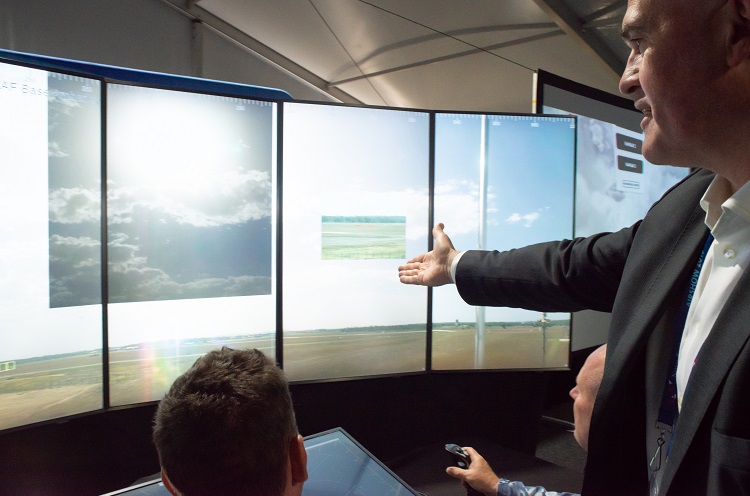RAAF Tries Out a Global Reach Remote Control Tower
The RAAF is trying out a remote airport control tower which will allow air force personnel to control aircraft movements and landings from anywhere in the world.
This is based on technology widely used in Europe but employed for the first time on a Defence establishment in the southern hemisphere. It could allow RAAF air traffic controllers to remotely direct aircraft movements at one of the remote bare bases on the Australian mainland or even at an overseas location.
The Virtual Control Tower for this trial has been set up next to the main Air Traffic Control Tower at RAAF Amberley in Queensland.
This is a joint project with industry partners Indra Australia and Kongsberg Defence and Aerospace who have been working with personnel from the RAAF’s Surveillance and Response Group to install a Kongsberg 360 Camera System and integrated inNOVA Air Traffic Management system in the remote facility. It follows an offer by Indra Australia and Kongsberg to demonstrate remote Air Traffic Control tower capabilities.
The system streams live images to a separate site on RAAF Base Amberley which are then displayed on large monitors, fused through the Air Traffic Management system with radar data and supporting Air Traffic Control information.
Kongsberg Defence and Aerospace president Eirik Lie said the camera and associated systems were developed for enhanced security, safety and sustainment of efficient air traffic services.
“Kongsberg is a renowned provider of well-proven military systems, such as the NASAMS Air Defence system, the Joint Strike Missile, Naval Strike Missile and the Remote Weapons Station, and Kongsberg is very proud to demonstrate the Remote Tower System at RAAF Base Amberley,” he said.
“The system includes a panoramic out-the-window view, external surveillance feed of augmented reality information on the display screens and an integrated view of Air Traffic Control information for remote control.
“This system features an ultra-high resolution real-time day and infrared camera system capable of detecting, tracking and identifying aircraft and ground objects at military and civilian airfields. The system is now installed on 15 airports in Norway – the largest remote tower program in the world.”
For this trial, Indra Australia supplied its inNOVA Advanced Integrated and Remote (AIR) tower and approach automation system. Company managing director Tehmur Khan Galindo said he was pleased with the progress of this installation which showcases the system’s capabilities.
“Indra’s inNOVA automation system forms the core for this solution. The inNOVA AIR suite can work with a wide range of camera systems and comprises the latest state-of-the art decision-making tools and safety nets,” he said.
“Functionality such as 4D trajectory and time-based separation is included in the system for future integration with OneSky and other platforms.”
The RAAF’s 44WGstaff officer WGCDR David Shepherd said this demonstration provided important insight and awareness of emerging air traffic systems technology.
“44 Wing’s focus is to deliver safe, adaptable capabilities for those who depend on us. Our support of the ‘virtual’ tower demonstration maintains our culture of technical and professional mastery in the Air Traffic Control discipline by gaining an understanding of future and evolving technologies,” he said.
Fundamentally, this technology directly aligns with the RAAF’s strategy and vision to transform the organisation into a 5th generation Air Force by capitalising on future high technology systems.
This article was first published by Australian Defence Business Review on February 28, 2019.

